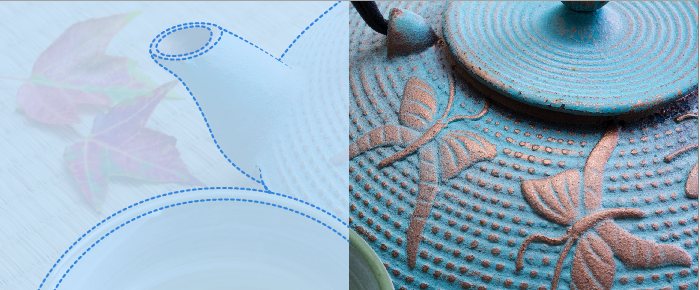Unilateral Neglect: Reducing Symptoms With Prism Adaptation

Unilateral neglect, a heterogeneous disorder in which the individual fails to report or respond to stimuli presented in the contralateral side of space, affects many individuals after stroke. Below, we discuss a case from my practice and review the available evidence on prism adaptation, the most researched intervention for this condition.
Meet “Millie”
Millie had a right hemisphere stroke one week ago. She has severe hemiparesis of her left arm and walks short distances only with moderate assistance of two persons due to the weakness and incoordination in her left leg and difficulty controlling her balance. She is working on motor rehabilitation with her therapists, but everyone is frustrated with her lack of progress.
In addition to her hemiparesis, her ability to complete everyday tasks –such as dressing herself and eating – is hampered by her inability to attend to the left side of her body and the environment. She is unaware that she is missing objects to the left. This often presents a safety hazard as Millie bumps into doorways and doesn’t see other hazards in the environment to her left.
Millie’s therapists believe that this unilateral neglect is also hampering her ability to make gains in her motor control. What would be the best way to improve Millie’s ability to attend to objects on her left so she is able to adequately perform her daily activities?
Why Intervene?
While Millie’s ability to pay attention to both sides of space may improve over time, it is currently reducing her ability to benefit from rehabilitation. It may also reduce her independence and increase her risk for falls in the long run, as neglect is a long-term impairment in 30-40% of individuals with the condition.1
Prism Adaptation
Interventions for neglect still have limited evidence for their effectiveness, with only a few randomized clinical trials, and most studies have small sample sizes. However, we might consider attempting prism adaptation, which is the most commonly researched intervention for unilateral neglect.2
This approach involves wearing prism glasses during reaching or other upper extremity activities to reduce neglect symptoms. We would have Millie wear prism glasses that shift the visual scene to the right. The evidence suggests that prisms of at least 10° are needed.5-7
While Millie is wearing the prism glasses, we might have her repeatedly reach for targets arrayed in front of her. This is the most common way to administer prism adaptation. We would have Millie sit behind a curtain so she can see her moving arm only as the hand approaches the targets. This method has been shown to be the most effective.9
We might, however, decide to have Millie perform other types of upper extremity tasks – such as serving tea, manipulating coins, or putting together puzzles – with her arms in full view. Two studies have shown that such upper extremity activities facilitated as much symptom reduction as did blinded reaches.3,4 Millie will need to complete 10 or more training sessions of prism adaptation to have the highest likelihood of reducing the unilateral neglect symptoms. 5-7
Assessment of Impact on Real Life Activities
As Millie’s neglect reduces, we will need to carefully assess its impact on her ability to perform daily activities and her safety awareness. This is especially important because neglect becomes more evident with more complex tasks and traditional neglect tests do not always give us the complete picture.
Thus, it is recommended to use a functional assessment, such as the Catherine Bergego Scale.8 Even this test, however, fails to assess some of the most complex daily activities a person may want to perform. So, a therapist needs to understand the patient’s desired types of activities and assess if neglect still interferes with their safe and successful completion.
- Kerkhoff G, Schenk T. Rehabilitation of neglect: an update. Neuropsychologia, 2012;50: 1072-1079.
- Newport R, Schenk T. Prisms and neglect: What have we learned? Neuropsychologia, 2012; 50:1080-1091
- Fortis P, Maravita A, Gallucci M, Ronchi R, Grassi E, Senna L,….Vallar G. Rehabilitating patients with left spatial neglect by prism exposure during a visuomotor activity. Neuropsychology, 2010;24: 681-697.
- Shiraishi H, Muraki T, Itou Y,Hirayama, K. Prism intervention helped sustainability of effects and ADL performances in chronic hemispatial neglect: A follow-up study. NeuroRehabil, 2010;27: 165-172.
- Turton A, O’Leary K, Gabb J, Woodward R, Gilchrist I. A single blinded randomized controlled pilot trial of prism adaptation for improving self-care in stroke patients with neglect. Neuropsychol Rehabil 2010;20: 180-196
- Rousseaux M, Bernati T, Saj A, Kozlowski O. Ineffectiveness of prism adaptation on spatial neglect signs. Stroke 2006;37: 542-543.
- Nys G, de Haan E, Kunnerman A, de Kort P, & Dijkerman H. Acute neglect rehabilitation using repetitive prism adaptation: A randomized placebo-controlled trial. Rest Neurol Neurosci 2008;26: 1-12.
- Azouvi P, Marchal F, Samuel C, Morin L, Renard C, Louis-Dreyfus A, Jokie ., Wiart L, Pradat-Diehl P, Deloch, G, Bergego C. Functional consequences and awareness of unilateral neglect: Study of an evaluation scale. Neuropsychol Rehabil 1996;6: 133-150.
- Ladavas, E., Bonifazi, S., Catena, L., & Serino, A. (2011). Neglect rehabilitation by prism adaptation: Different procedures have different impacts. Neuropsychologia, 49, 1136-1145.









